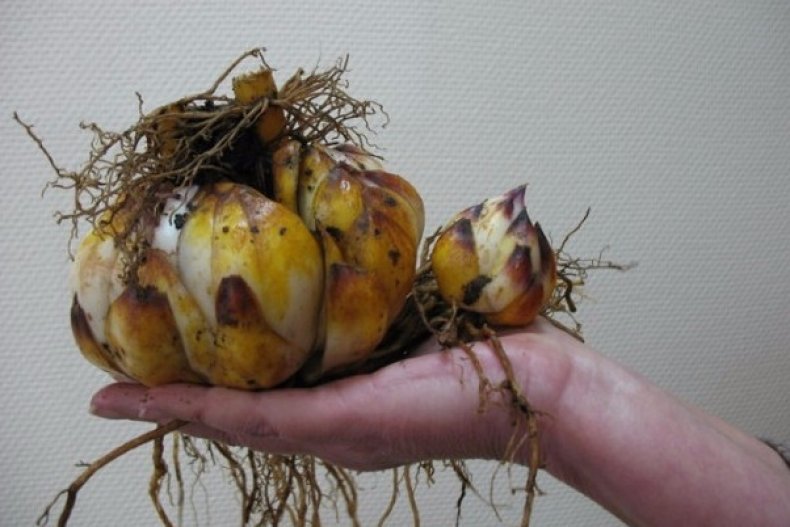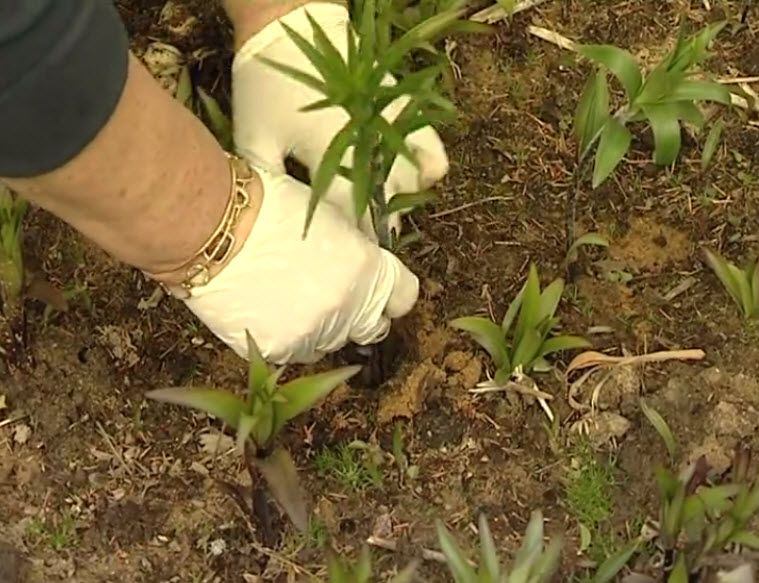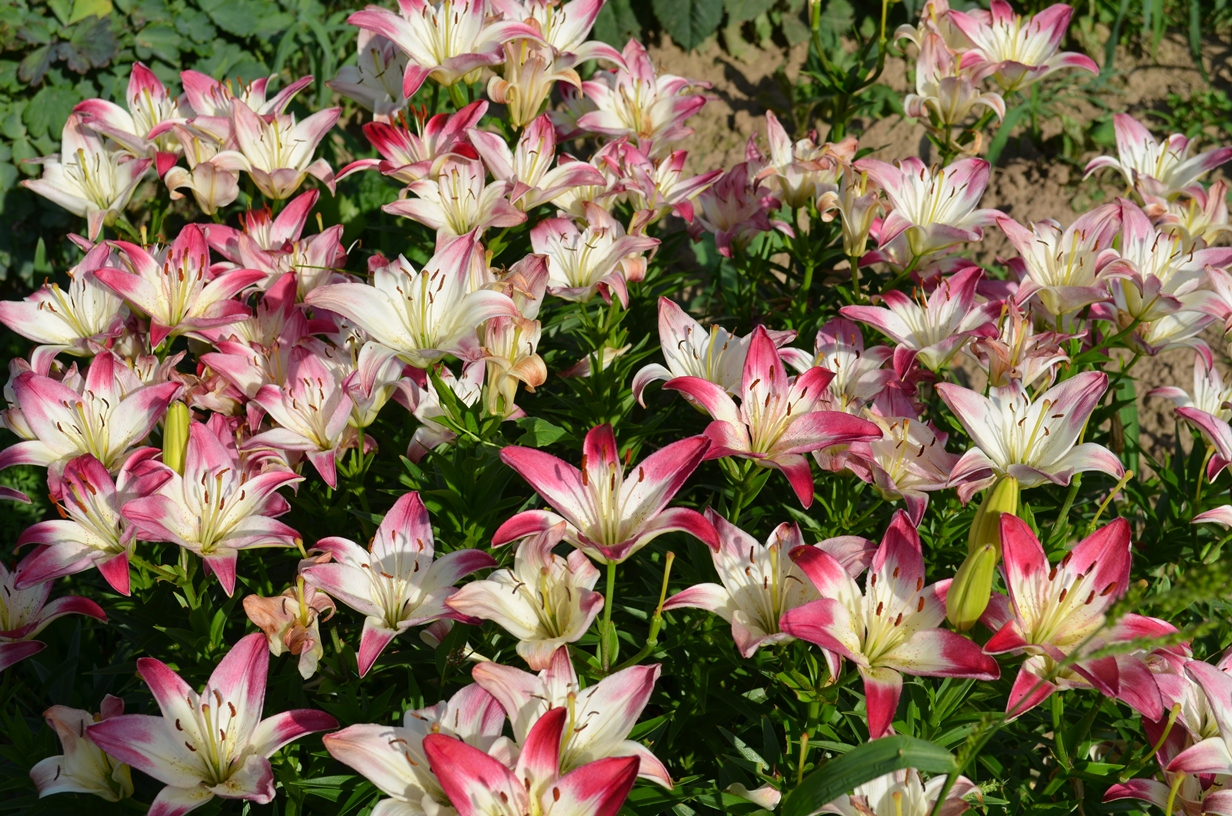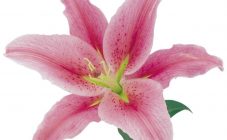Content:
Pollination of plants is the transfer of pollen from one plant variety to another belonging [to the same species. After that, the genetic material is mixed. The result is one variety with mixed traits from both species.
Fragrant and beautiful lily has always been the main decoration of any garden plot or flower bed. They appreciate it for its unpretentiousness and an easy way of planting. However, one should not forget that plant health and lush flowering directly depend on compliance with simple rules of agricultural technology. Gardeners who decide to breed bushes of different royal flowers on their site sooner or later begin to wonder: can lilies become pollinated and change color? To answer this question, you need to understand in detail how plants reproduce and how lilies are pollinated.
Reproduction
Planting seeds for cultivation is a troublesome and laborious business. Therefore, gardeners and gardeners prefer vegetative propagation methods:
- Bulbs. This is the easiest and most common way to reproduce lilies of any kind. After the plant has been growing for 3 or 4 years, and pleases with exuberant flowering, several bulbs are formed underground, which can be dug up, divided and planted.
- Scales. Small new bulbs form at the base of each bulb. You just need to snap them off and put them in any container.
- Children. They appear at the base of the plant stem. In the fall, when the lily has faded, the babies need to be separated from the stem.
- Bulb. During flowering, buds form in the leaf axils, which, after the end of flowering, are harvested, then stored until spring in a cool place.
Why lilies change their color without pollination
Re-pollination is a complex process, it is used only to bring new varieties of flowers through seeds. Plants categorically cannot pollinate through reproduction in other ways.
Sometimes it can happen that white lilies have been planted, and plants with yellow and red flowers have grown. Many people might think that the seller confused and sold the wrong variety, but this is not at all the case. The reasons why white varietal lilies have turned red or yellow are quite simple - the plant in a new place begins to hurt.
If flowers have streaks ranging from yellow to dark red or brown, this is a sign of variegation virus infection. The disease cannot be treated, therefore, as soon as infected bushes appear on the site, they must be immediately destroyed along with the bulbs in order to prevent infection of healthy flowers.
If, after the beginning of flowering, the lilies have a different color than expected, there may be several reasons for this:
- Over time, some varieties begin to lose their characteristics and acquire the usual color of their ancestors - a yellow lily.
- Unfavorable weather conditions and inappropriate soil composition for planting can also affect the shades of the grown crop.
- Infection of lily bushes with various viral infections can change the color of plants to unexpected shades.
Are lilies of different varieties re-pollinated?
When I wanted to see lilies of various shades on a flower bed, flower growers ask themselves: do lilies get pollinated among themselves? This method would help to see the different colors of plants.
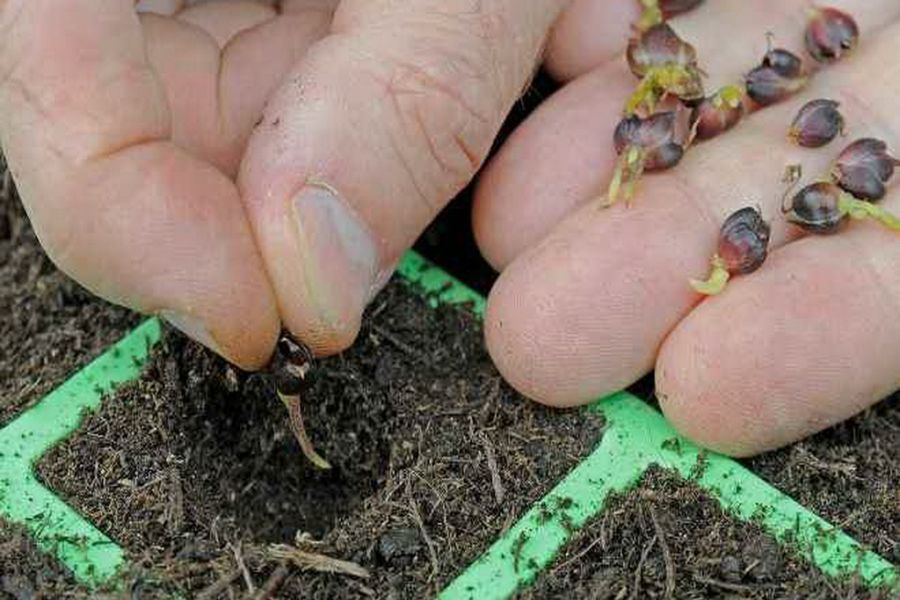
Lilies are re-pollinated only with one method of planting - if they are grown through planting with seeds
If lilies of a different color have appeared on the flower bed, and the daylily itself is already from 3 to 5 years old, then, most likely, old bulbs have sprouted. Some varieties of culture are distinguished by their vitality, and can grow themselves from children left in the ground.
In order for the color of the plant not to change due to various diseases, one should try to buy bulbs only from trusted suppliers. They should be intact, with no signs of rot or mucus. If you carefully consider the choice of bulbs, planting and care, you will never worry about the question: are lilies pollinated among themselves?
Should I plant lilies of different varieties on the same flower bed? If varieties belong to different groups, they may have different flowering periods and different soil requirements. For example, Asian hybrids begin to bloom earlier than others and multiply more intensively. Eastern groups bloom later, and they need to be planted every 5 - 7 years. They do not tolerate the winter season very well and require additional shelter. If you put two groups together, it will be inconvenient to look after them. Why load yourself with extra work, it is better to grow different groups in different flower beds.
Can lilies change color next year
Growing lilies is quite troublesome. Gardeners use hybrid flowers to decorate their plots - they have brighter varied colors. Many gardeners are interested in the question: can their lilies change their color when blooming next year? They can.
If the flowers are transplanted frequently, irregularly watered, then the bulb mutates, and the original maternal genes return. Therefore, the color of lilies can change as the plant grows and lives.
For its beauty and amazing aroma, lily has long been recognized all over the world. Gardeners should do their best not to stress the plant, then they will not have to watch the miracles of color changes, and wonder: why did the lilies change color?
General rules for caring for lilies
An exquisite royal flower, although considered unpretentious, requires attention to itself and regular care, otherwise the plant may not only change color, but not at all please its owners with exuberant flowering and delicious aroma.
In order for flower beds to bloom gorgeous, you must follow the recommendations of experienced flower growers:
- Overheated soil is a harmful factor for the grown bushes. Florists are advised to sprinkle the areas around the stems with straw or sawdust. So biological processes will not be disturbed and the development of the plant will go the right way.
- Regular watering should be carried out directly on the roots of the crop. If you water the leaves, then in hot weather, the plant can get burned. You should not overdo it with moisture - lilies do not like drought, but excess water will negatively affect the normal life of the plant.
- Once or twice a year, you need to feed the soil with balanced fertilizers. This should be done in early spring - before planting or the beginning of flowering, and in late autumn - after flowering.
- Lily bushes can grow up to 2 meters in height and therefore require a garter. This will avoid damage.
Why lilies may not bloom
We chose healthy bulbs, planted them in prepared soil, good care, but no flowers! What could be the matter? Experienced flower growers are ready to reveal the secrets of their observations:
- Bulbs for planting should be not only with external signs of suitability, but they must also be stored correctly - the bulbs are placed in a bag with sawdust and removed to a cool place.
- Flowers do not like when they are planted near tall trees - their roots take all the nutrients required for lush flowering. The foliage of the trees prevents the lily bushes from getting enough sunlight.
- Staying too long in one place can affect the quality of flowering, or the bushes stop blooming altogether. It is necessary to change the habitat of the bushes every 4 to 5 years. Before planting, you do not need to tear off the stems from the bulbs, you need to wait until the stem is completely dry naturally, and then transplant the rows.
Beautiful fragrant water lilies of plants grown in the garden in compositions with other beautiful flowers will delight not only their owners. There are many admirers of beauty and aroma of lovingly grown royal plants. Perennials will grow for more than one season, and endow those around them with their originality and fragrance.
